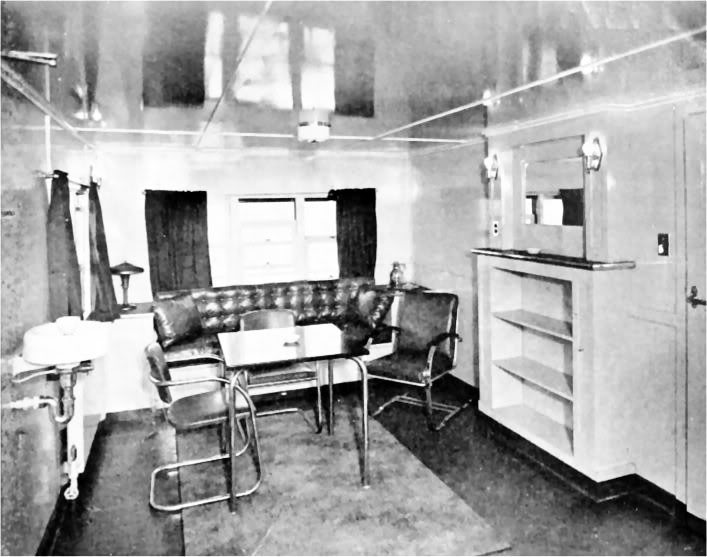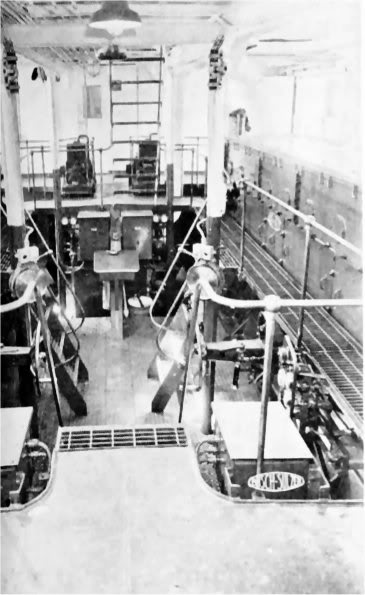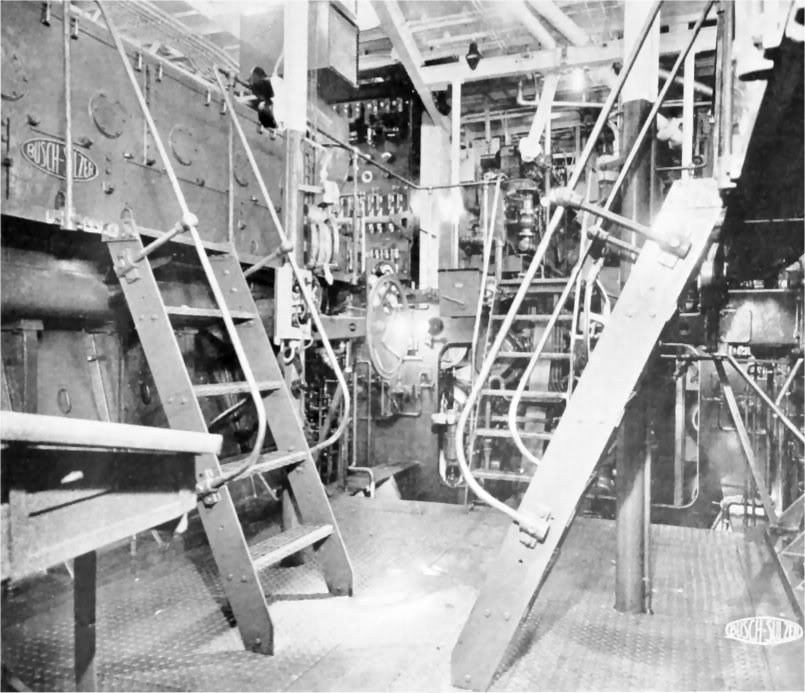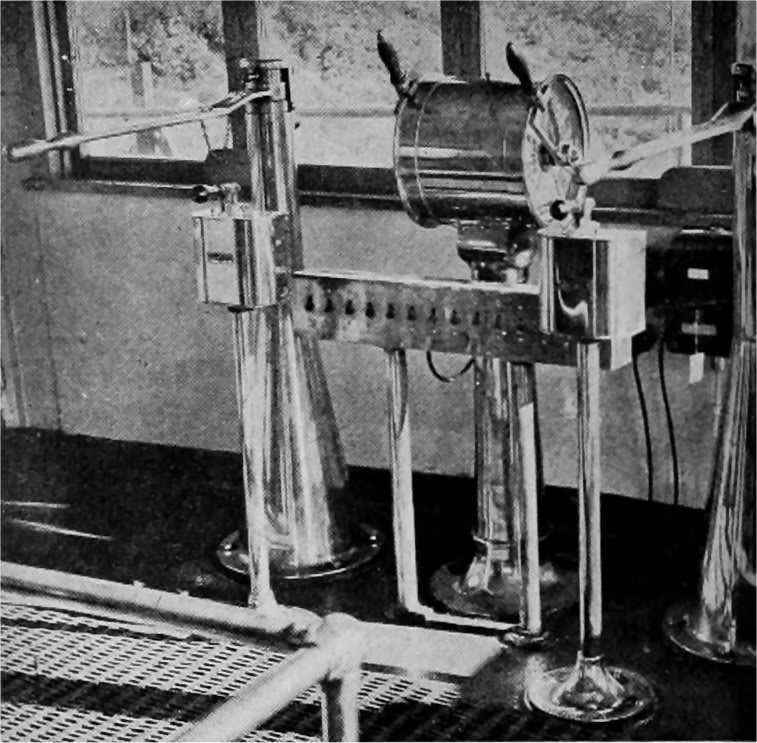Auke Visser's MOBIL Tankers & Tugs Site | home
An Interesting All Welded Steel Hull Shallow Draft River Towboat
Source : Pacific Marine Review, Volume 36, April 1939
Late in 1937 the Socony Vacuu mOil Company established an oil distribution service on the Mississippi, Missouri and Ohio Rivers, with a new diesel driven, tunnel stem, twin screw towboat and barges especially designed for this service.
So successful was this service that a need for additional equipment became apparent almost immediately.
Based on experience with the original towboat, a new hull and superstructure was designed and is now in operation under the name St. Louis Socony.
The hull of this vessel is 137 feet long and has a beam of 35 feet, a depth of seven feet and a draft of 4 feet 6 inches. It is of welded
transverse framing construction with longitudinal bulkheads in way of the deck house to give depth of girder. Additional longitudinal
trusses are fitted in the way of engine beds. The accommodations in the deck house are arranged to permit the centerline bulkhead being carried up through the deck house to assist in girder strength. In way of engine room the centerline bulkhead is omitted. All hull space be low main deck, except in the engine room, is reserved for buoyancy compartments and for various tanks.
 The crew accommodations on St. Louis Sorony set a new level of luxury for river towboats, as shown here in the officers' lounge with its lustrous finish and its modcme metal furnishings and lighting fixtures.
Propulsion machinery consists of two Busch-Sulzer 4 cycle mechanical injection diesel engines. Each of these engines has eight cylinders of 13 inch bore and 20 inch stroke, and has a rated capacity of 600 B.H.P. at 300 r.p.m. and 75 pounds mean effective pressure. Built in auxiliaries on each of the engines include: a cooling water circulating pump; a fuel oil transfer pump; a lubricating oil pump ; and a cooling water heat exchanger. The last named is installed because the fresh water in which this towboat operates
is often so charged with silt that it would be very detrimental to use it for direct cooling in the engine cylinders.
The closed fresh water cooling system consists of a Sims heat exchanger built into each engine and each of sufficient capacity to handle the cooling water necessary for a maximum engine output of 700 B.H.P. when the raw water from the river is at 90 degrees F. These heat exchangers are connected so that either one or both can serve either one or both main engines and either one or both auxiliary engines. The engine cooling water is drawn by the pump from the storage tank, driven through the engine jackets, and thence through the heat exchangers and back to the storage tank. The raw cooling water for the heat exchangers is handled by
a Gardner-Denver centrifugal pumj) of 400 gallons per minute capacity.
 Two Busch-Sulzer 8 cylinder 600 B.H.P. diesel engines drive the two propellers of the St. Louis Socony. Looking aft from the upper platform, featuring, on upper level in background, the two steering engines and two Nugent filters.
Each main engine is directly connected to its propeller shaft through a Kingsbury thrust bearing and drives a Ferguson prepeller of Socony Vacuum design having 71 inch diameter and 49 1/2 pitch.
As will be noted in our illustration, the control panel and throttle wheel for each main engine is located on the inboard side of the housing and the two controls may be operated simultaneously by one engineer. Starting air is stored in 10 tanks 24 inches in diameter and 96 inches long. These are kept at 250 lbs. pressure by two IngersoU-Rand compressors.
 The working platfomj, looking aft. Note on upper level one of the generating.
A pair of 200 gallon tanks in the shaft alley store lubricating oil; and two 60 gallon service tanks, one located above each engine, feed the oil to the lube oil pumps on the engines through two Nugent filters.
 Pilot house, featuring engine, steering, seats and telephone controls.
Two 40 KW Century generators each driven by a Superior dicsel engine rated 63 H.P. at 900 r.p.m. provide power for lights and auxiliary machinery. An Edison 150 ampere hour storage battery picks up emergency circuits in case of any current failure. This battery also supplies lights and small motor current when the towboat is tied up.
|